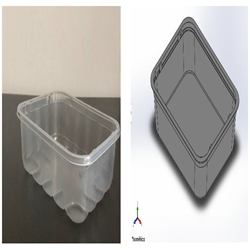Environmental pollution is greatly caused by industrialization as well as human beings and water contamination is one of the major hazards for living. Many kinds of contaminations have been studied such as bacteria, viruses, organics molecules, dyes, and heavy metal ions, such as Cr6+, Pb2+, Cd2+, Zn2+, As3+, Cu2+ and Hg2+, etc. Among all these contaminants, heavy metal ions are non-biodegradable in nature and can be accumulate in the human body continuously over time, which results in severe adverse effects like a breakdown of a nervous system, skin diseases, liver damage, kidney failure, anemia, hepatitis, ulcers and carcinogenic.
The key objectives of this study are to prepare the palm kernel shell (PKS) powder, the functionalization of the PKS powder, preparation of activated carbon nanomaterial (CAN) and functionalized CAN and application for the treatment of heavy metal-contaminated water.
In this study, four heavy metal ions namely chromium (Cr6+), lead (Pb2+), cadmium (Cd2+) and zinc (Zn2+) were selected as the water contaminants. Furthermore, four different bio-sorbents were prepared namely PKS powder, functionalized PKS (PKS-Sulfo), activated carbon (AC) and functionalized activated carbon (FAC). All of these adsorbents were successfully applied for the treatment of heavy-metal contaminated water. They showed good adsorption affinities for the Cr6+, Pb2+, Cd2+ and Zn2+ heavy metal ions. Adsorption of Cr6+ and Pb2+ was determined to be maximum almost reach to 99% in case of each adsorbent. The Cr6+ whose adsorption was found to be 80-85%, followed by 70-75% of Zn2+ ions adsorption in all four applied adsorbents.
Two isotherm models namely Freundlich and Langmuir and three kinetic models namely the pseudo-first-order, pseudo-second-order, Parabolic diffusion were applied for the determinations of kinetic interactions between the adsorbents; (PKS, PKS-Sulfo, AC and FAC) and the adsorbates; (Cr6+, Pb2+, Cd2+ and Zn2+). The adsorption followed Pseudo Second Order in all cases of the adsorbents. Langmusir adsorption isotherm was found to be followed in case of PKS-Sulfo, and only zinc adsorption in PKS, apart from this activated carbon (AC), Functionalized Activated Carbon (FAC) as well as PKS were found to follow Freundlich isotherm model.
The adsorption efficiency among all four adsorbents was found to be in the order of FAC > AC > PKS-Sulfo > PKS. This is a greener approach that can serve the dual function of the protection environment from the smoke resulting from the burning of PKS waste. The first function was by converting the PKS into a useful material instead of burning it and secondly it is applied for the treatment of heavy metal-contaminated water. The design materials can further be exploited for dye-contaminated water, the chemical industry, catalysis, air and gas purifications and automobile industries, etc.
*Abstract of the thesis (PhD) by Baby Rabia.
For further information please contact:
Zulkarnain Zainal, PhD
zulkar@upm.edu.my
Date of Input: 30/08/2023 | Updated: 30/08/2023 | roslina_ar
MEDIA SHARING























